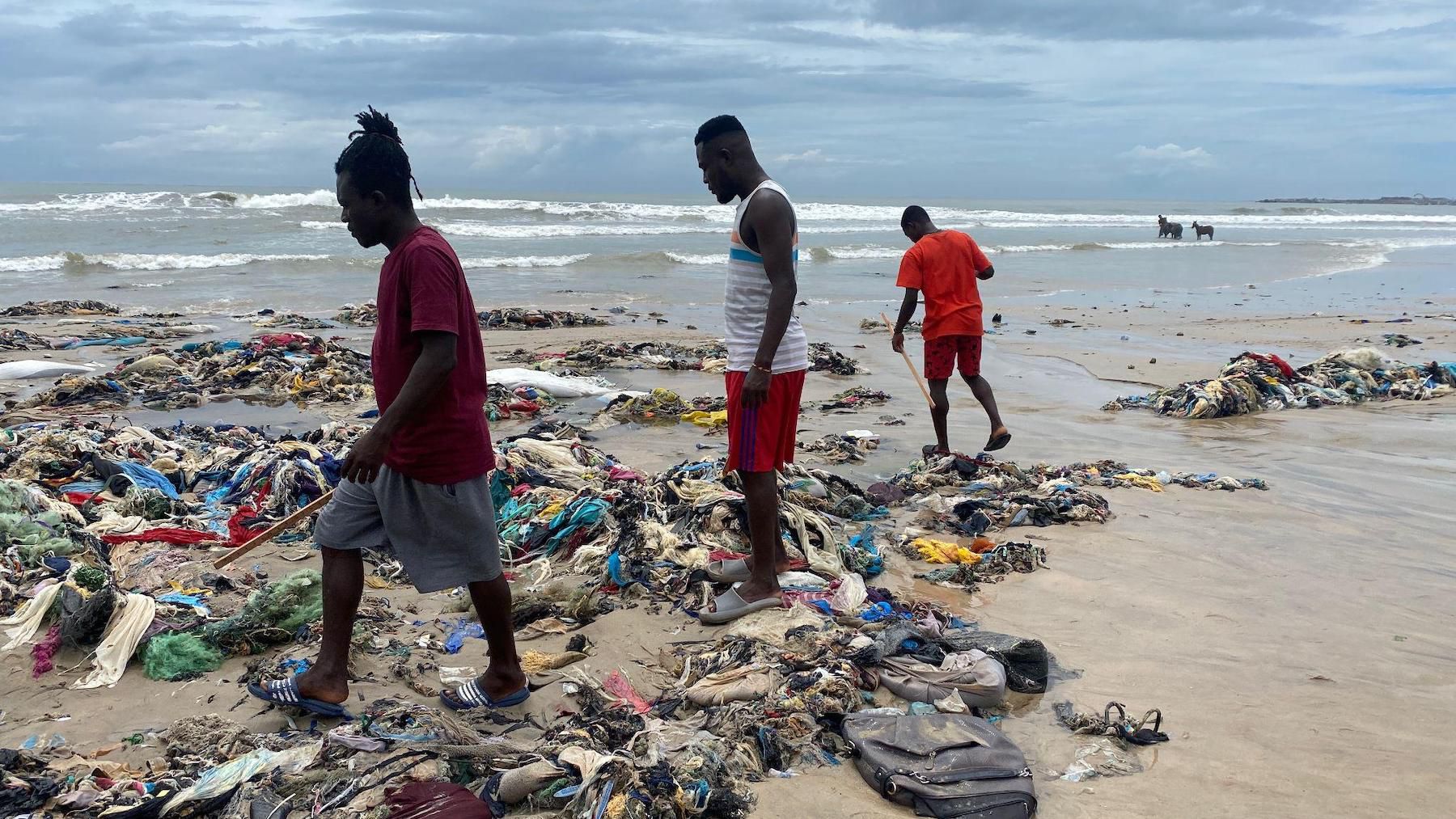
Every week, roughly 15 million items of old clothing are shipped to Ghana, unwanted discards largely from the wardrobes of North American, Chinese and European consumers.
The clothes are sold by the bale, much of it to retailers at Accra’s Kantamanto market, one of the largest secondhand clothing markets in the world. It’s a thriving hub for resale, repair and upcycling. But while the volume of old clothes sent from global markets keeps growing, its quality is getting worse.
Today, roughly 40 percent of everything that passes through Kantamanto is worthless trash that’s sent straight to landfill, plunging local retailers who can’t recoup what they paid for the bales into debt and turning the global secondhand clothing trade into a de-facto waste management strategy for the fashion industry, according to The Or Foundation, a nonprofit that works with the Kantamanto community.
Clothing waste has filled Accra’s landfills to overflowing. Tangled textile tentacles litter its coastline, with some sections of beach covered in mounds of textile and plastic that reach over five feet in height, according to The Or Foundation. Elsewhere, the Atacama desert in Chile has become a similar dumping ground for fast fashion.
The sector’s waste problem has drawn the attention of regulators, with proposals to make brands responsible for what happens to clothes at the end of their life gaining ground around the world.
Exactly what these so-called Extended Producer Responsibility, or EPR, schemes might look like is largely yet to be defined, but the potential policies have significant implications for countries like Ghana that receive large quantities of the world’s trade in secondhand clothes.
France, the only country in the world to currently have an EPR programme in place for textiles, exported 80 percent of the clothes collected under the scheme in 2021. Refashion, the nonprofit that oversees the French programme, paid out €23 million ($24.6 million) to sorting facilities to process the discarded garments. No money went to the countries where the clothes ended up. Refashion did not respond to a request for comment.
It’s “basically waste colonialism,” said designer and Or Foundation programme manager Chloe Asaam in a video created by the organisation as it ratchets up campaigning to influence emerging policy moves.
On Tuesday, The Or Foundation published a position paper, calling for EPR policies that create global accountability and incentivise a meaningful reduction in new clothing production. The proposal has been backed by luxury resale platform Vestiaire Collective, which has a longstanding partnership with The Or Foundation focused on fighting clothing waste.
It kickstarts a campaign to influence policy ahead of the summer, when the EU is expected to provide an update on its plans for a fashion-focused EPR.
The call plays into a longstanding controversy over who should foot the bill for environmental damage, largely caused by the behaviour of consumers in wealthier countries, but falling on poorer nations. The crowning achievement of November’s UN COP27 climate summit was an eleventh-hour deal to create a “loss and damage” fund to help cover the cost of climate disasters, though how it would be financed and structured was left vague.
The Or Foundation is calling for brands to face a tax of at least $0.50 for every new garment they make to effectively cover the costs of waste management, with that fee scaling up for clothes that are harder to recycle. Items with no realistic final destination other than landfill or incineration should cost brands a minimum of $2.50 to produce in tax, according to the position paper. At present, the most a brand might pay under the French EPR scheme is €0.14.
The Or Foundation is calling for funds to be distributed in line with how waste flows around the world, with money set aside to clean up the damage already caused by textile waste. And brands should publish detailed information about how much they’re producing, with the goal to cut the amount of new clothes they make by 40 percent within five years of any EPR programme coming into force, the nonprofit said.
The goal is a “10-year phase out,” said Liz Ricketts, co-founder and executive director at The Or Foundation. “We’re not advocating for the clothing to continue coming here forever.”
The next step is to get broader buy-in from the industry. Vestiaire Collective is leading a working group at French industry association Paris Good Fashion geared towards finding common ground on circular policies.
“It’s time for us to gather and to say another way is possible,” said Vestiaire Collective’s chief sustainability and inclusion officer Dounia Wone. “It’s our only true and serious chance to say, ‘OK, no, we saw that [fast fashion] model and we believe we need to stop or reduce and constrain that model into something sustainable for the planet and people and communities.”
For more BoF sustainability coverage, sign up now for our Weekly Sustainability Briefing by Sarah Kent.



